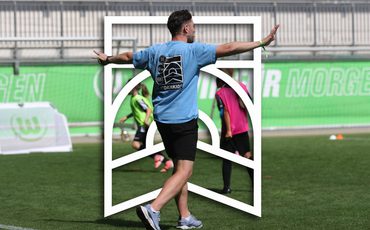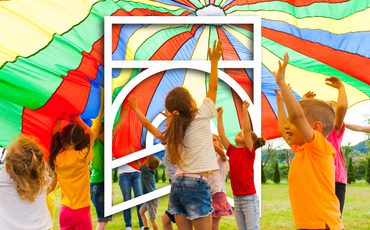Staying Safe as a Coach
Module 6
This section is very important for you. Child abuse in sport is a very serious issue. Many sport coaches have in the past gone to prison when found guilty of abusing children. Many others have lost their career, families and livelihood even when they were cleared of any wrongdoing. This section is all about helping you, the coach, stay safe when coaching children.
Staying safe as a coach means three things:
1. Sound Practice: Your practice is based on sound and age-appropriate scientific principles.
2. Safety: You have covered all the safety-related basics before you even stand in front of the children.
3. Minimise Risk of Allegations: You know how to minimise the risk of receiving an allegation against you and what to do if it does happen.
1. Sound Practice
Ensure that your practice is based on sound and age-appropriate scientific principles. This is all about understanding the basic principles of your sport and coaching, and how these principles apply to the age group you are working with. For example, you should be familiar with some key facts about physical and psychological child development. Another example would be having sufficient knowledge of the special physiological characteristics of children compared to adults, so we don’t ask them to do things they are not ready for yet.
Remember:
• Age appropriate principles
• Physical development
• Psychological development
• Social development
• Principles of skill acquisition
2. Safety
The second point you need to be mindful of is covering all the safety-related basis before you even stand in front of the kids. For example, gaining the appropriate qualifications as a coach. This is not only about your sport specific qualification, but getting first aid training and attending a safeguarding and protecting children in sport course where available is highly recommended. You should also get a police background check if possible.
Other important elements include performing a thorough risk assessment of your sport and venue, and keeping good records of your participants: emergency contact numbers and relevant medical information are an absolute must. You should also be always within reach of a phone or have a fully charged mobile phone with you. Having a first aid kit with you or knowing where the nearest first aid point is and who the first-aider on duty is are also important.
Remember:
• Get qualified
• Get police checked
• Complete Risk Assessments
• Keep participant records
• Be ready for incidents
3. Minimise Risk of Allegations
The third and final point relates to the need to minimise the risk of receiving an allegation against you and what to do if it does happen. As a coach you should take the following into account:
1. Physical Contact Guidelines: Be familiar with your sport’s guidelines on physical contact and coaching. In some sports, a certain level of physical contact with the participant is unavoidable and even desirable to ensure their safety. However, all sports now offer guidance on ‘safe physical contact’. Get them and study them carefully. Sharing these guidelines with participants, and especially with parents so they know what to expect, is very good practice.
2. Kind, Professional and Polite: Be kind, professional and polite in all your interactions with participants, parents, other coaches and officials. Avoid shouting, heated arguments and the use of inappropriate language like profanity or sexualised expressions.
And coach… everybody knows you are human too. If you ever do or say something that is wrong, please apologise unreservedly as soon as you realise. If you find yourself apologising a lot, it may be time to get some help from a professional like a sport psychologist. Please take action before it is too late.
3. Avoid Vulnerable Situations: Don’t put yourself in a vulnerable position, even if you mean well. A big, big NO, NO is to never being left alone with a child. If you need to meet with a participant or have a chat with them, always do it where others can see you, never in a separate room, and never with the door closed. If the child demands privacy, then go get another adult that can act as a chaperone and sit in with you.
Transport
The same applies to giving children lifts in the car. You should never give a child a lift on your own. In the extreme case that you are forced to do so because there is no possible alternative, children should always go in the back seat. You should also let someone else at the club know that this is happening, and they should record it and follow up with the child’s parents or guardians.
Overnight with a Team / Changing Rooms
Suffice to say that the same policy applies when you are on the road with a team or before and after practice or competitions. You should never enter a child’s room and never sleep in the same room with them. And you should never be in the changing rooms when they are showering. Please check your national guidance on the use of changing rooms as this may vary depending on the age of the child.
Photography / Video / Social Media
Finally, please follow your club and federation policies and guidelines regarding the use of photography, video and social media. These should make clear what you are and aren’t allowed to do. And while we are on the topic, if you work with children, all your social media content like Facebook, Twitter or Instagram should be appropriate. You can be sure that parents will check you out before they let you take care of their kids.
If you haven't already, please complete the other sections we have on Safeguarging and Protecting Children in Sport listed below:
What is Child Abuse in Sport?
The Impact and Signs of Child Abuse
Preventing Child Abuse in Sport
If you have completed all of these sections, then thank you for taking the safeguarding of the children that you coach seriously.
Please, please, bear in mind that this is only an introduction to this very important topic. If you coach children regularly, you should seek out a specific course. Perhaps your federation or a sporting organisation in your area or country has a course aimed right at this area. Go check them out.
And remember, when it comes to children’s safety in sport:
Better Safe than Sorry
and
Prevention is Better than Cure
PLEASE NOTE
Safeguarding and Protecting Children in Sport, while important in every country, fits within a different best practice/legislative framework for each country. Because of this, please check the specific laws, policies and procedures that are applied in your country. Also check the information and advice provided by your sports sector and your sport’s national governing body/federation.
What is included here are GENERAL GUIDELINES. These are primarily based on UNICEF Safeguarding in Sport Guidelines.
Please see - https://www.unicef.org.uk/spor...;
Comments
Related Pages


